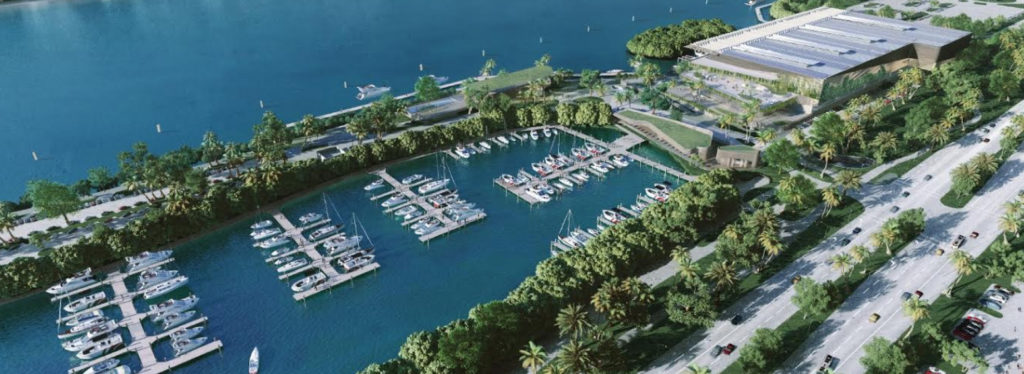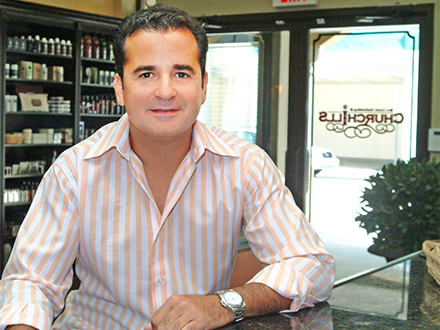Raymond Jungles, a home-grown Miami entrepreneur, knows a thing or two about growing. Inspired by the lush beauty of Miami’s natural landscapes, Raymond has made a career out of following his passion. He is the founder of the Miami-based landscape architecture firm, Raymond Jungles, Inc. (RJI), recognized for excellence in the design and implementation of public and private sector projects. Raymond applied his lifelong passion for landscape architecture soon after graduating with a degree in landscape architecture from the University of Florida in 1981, founding the firm in 1982.
Lucky for us, he is bringing that passion to Marina PARC. He is working with us to embrace a moral responsibility for sound, sustainable environmental stewardship through the marina, by investing in the “living shoreline.” In Raymond’s vision, the entire marina will be pedestrian friendly, with open spaces and a lush native tree canopy with unfettered waterfront access.
Keep reading to learn more about what made this ‘Made in Miami’ entrepreneur the success he is today, and how Marina PARC will benefit from his passion.
Q: How did you get interested in landscape architecture?
A: I’ve always had an appreciation for natural and built environments, and landscape architecture molds both of them together. Early in my career, I was influenced by Yosemite National Park, the architecture of Luis Barragan and the gardens of Roberto Burle Marx.

Q: When you’re not at work, where can we find you?
A: My work is my passion, so what I do generally does not resemble what most would define as ‘work’. I love being onsite doing the layout, interacting with the participants, and seeing a vision come into being. I’m also very curious, so I love research, books, travel, a walk in the Grove or at Fairchild Tropical Botanical Garden, riding my bike. I love spending time with my wife, Gina and people I enjoy. But mostly, I’m a creator. It is what I do for work and for pleasure. As Burle Marx said, you should always “do what you like.”
READ RELATED: Alex Yanes Draws Inspiration from the Magic City
Q: You could have picked anywhere in the world – so why did you choose Coconut Grove as the place to open your office?
A: I feel very comfortable in “the Grove”. It has that effect on people. Bjarke Ingels’ initial design intent was to re-Grove the Grove. It is a grove of mature canopy trees and palms. The adjacent bay, the high ground, and the public amenities. Tree covered paths and roadways, the Barnacle State Park, the Kampong, its parks, libraries, schools, churches, the parks, marinas, boat launches, Bayshore Drive, seeing my projects. The waterfront, restaurants, the sidewalk cafes, the stops, the movies. The Grove has it all.
Q: What makes South Florida’s landscape unique and how do you ensure that your projects speak to that?
A: We are at the flat end of a very large peninsula that juts into the ocean. We are surrounded by the majestic Florida Everglades, and Caribbean islands. Our sky is impressive and varied. We have a gentle climate with abounding greenery so it’s like a permanent vacation. We have clean air, for a major metropolitan area. Our gardens promote the use of native plants, creation of habitat, and conservation of the earth’s valuable resources. By using species that are encouraged to mature as nature intended, we eliminate the need for countless hours of pruning. We prefer softer, looser order of plant volumes; gardens that harmonize with local ecosystems; gardens that appear almost subversive. Built interventions are minimal and sculptural, complementing through contrast the soft plantings. Color and texture are generously applied.

Q: What is your inspiration for the design behind Marina PARC?
A: My inspiration came from the setting. The serene boat basin, marine stadium, surrounding vegetation and dramatic offsite views make this marina one of the most remarkable sites in South Florida. Bringing residents and visitors closer to nature, creating space that is inspirational, advancing curiosity, knowledge, and appreciation of the relationship between people, nature, and art – this has been my inspiration for all of my projects and this site makes the perfect canvas for the next.
READ RELATED: Key Biscayne Mayor Mayra Lindsay Shares the Secrets of Virginia Key
Q: How will the living shoreline incorporate into the bigger plan?
A: Planting native shoreline plant species, as well as mangroves, will enhance the habitat for indigenous flora and fauna. The new Marina PARC will be an urban laboratory for living.

